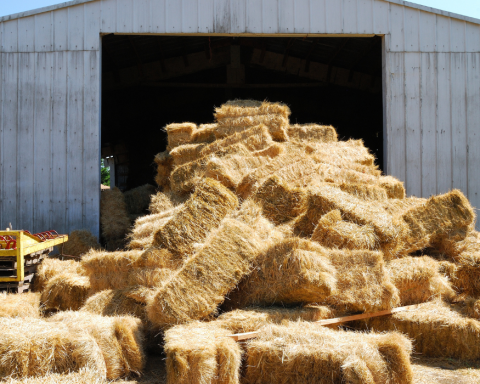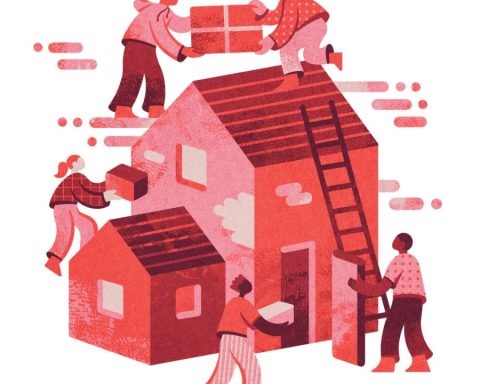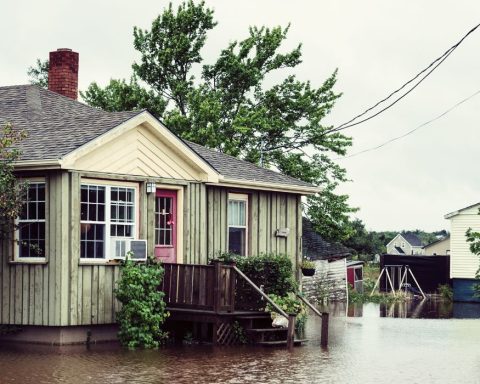Guy Dauncey is the author of Journey to the Future: A Better World Is Possible.
All around the world, people on the cruel side of the affordable housing crisis need our help. Something needs to be done to aid those who don’t have shelter, who struggle to pay sky-high rents, who are living in tents and cars and for whom the hope of ever buying a home has long gone. Financialized capitalism, bereft of kindness, has created misery for millions, turning housing ownership into an asset class, ripe for the squeezing of struggling tenants.
What has caused the crisis? An abundance of money pouring into the market from various sources has met a shortage of supply, driving up rents and prices. Lower-income people who do not receive inheritances have been pushed into the housing gutter, while governments have washed their hands and looked the other way. Finally, politicians are waking up. Last week, I looked at immediate, rapid solutions. This week I suggest fundamental changes that could end the housing crisis, forever.
- Make a binding commitment
The data tells us that we need to build 3.5 million new units of affordable housing by 2030. That’s 350,000 units a year – seven times more than the federal Liberals, NDP or Conservatives have proposed. A quarter of these need to be for people on very low incomes, renting for less than $750 a month. Governments at every level need to declare an emergency, call for all hands on deck, form collaborative partnerships, and ensure that this much housing gets built – all of it green and sustainable, using heat pumps, not natural gas, and ideally with Passive House design. The annual investment – some $95 billion a year – does not need to come from taxation, since it’s a bankable investment, a self-supported debt. In 2021, Canada’s banks and credit unions created $454 billion in mortgages. A Canadian public bank similar to Germany’s KfW bank or Holland’s NWB bank could create $95 billion a year at zero or very low interest, and make it available proportionally to every province.
- Create carrots and sticks
To build so much new affordable housing will require committed leadership and the mass production of manufactured and modular homes. To tempt developers, governments could waive corporate taxation for the builders of genuinely affordable housing and continue the 100% GST rebate. They could waive income tax for tradespeople who work on affordable housing and for anyone who creates a new secondary suite. Every municipality could be required to set up an affordable housing agency as a condition of getting funds; to set yearly targets to build sufficient new affordable housing based on local data; to relax exclusive zoning; to accelerate the approvals process, as Victoria has done; and to build to green standards in walkable communities within easy reach of transit.
- End exclusive zoning
When an area is zoned exclusively for single-family housing, it shuts out the townhouses, fourplexes, cottage courts, apartments and multi-family housing that offer affordable housing for people on lower incomes. This type of housing is known as the “missing middle” because it’s neither single-family homes nor big tower blocks. By ending this exclusivity, as they’re doing in New Zealand’s five largest cities, and doing so with care, many new opportunities will arise to build affordable housing. If some neighbours are fiercely opposed, allow a street to opt out. Single-storey commercial strips can be rezoned to allow three-storey living above the stores. Secondary suites can be allowed in every single-family home. Whenever a developer buys a property with development in mind, they should be required to build a percentage of the units as affordable housing. In Vienna, the proportion is 66%; in Vancouver, it’s only 20%. There should also be a guarantee of tenant protection, as in Burnaby, or tenants’ democracy, as in Denmark, and a density bonus offer if they include special-needs housing. Alternatively, they could pay into an affordable housing fund.
- Empower non-profit developers
If you live in a housing co-operative whose members have paid off their mortgage, your annual costs should be low, just as they are for a similar homeowner. If co-ops and similar forms of non-profit housing became the norm for affordable housing, the entire concept of rent, which causes divisive conflicts and drives inequality, could be gradually retired. In Vienna, one of the most beautiful and livable cities in the world, two-thirds of the residents live in municipal, co-operative or publicly subsidized housing. This can work for transition units for people experiencing homelessness, for social housing for people on income assistance, for below-market affordable rental units and for regular market rental units. To stimulate non-profit developers, in addition to the incentives above, projects could be exempt from development cost charges and be given a 10-year property tax waiver. Ending mandatory parking requirements for new buildings would also help, since parking can cost up to 20% of a new unit, yet most low-income people don’t own cars.
- Turn tenants into owners
To build a fair, equitable society, and ensure that everyone has a secure affordable home to live in, we need to end the financialization of housing. Between 2015 and 2019, for every new affordable unit created at public cost, 15 units renting below $750 a month were lost to real estate investment trusts and similar investors. A home is a fundamental human right, not a speculative commodity. We need to steadily convert most rental units to co-operative or non-profit ownership, excluding homes owned and rented out by a single person. This could be achieved by giving community organizations the first right of refusal and the financial means to buy a rental apartment or mobile home park, to protect it from speculative investors by placing ownership with a community land trust, and by allowing pre-emptive compulsory purchase when it is in the public interest. In 2021, Berlin voted to buy 15,000 city apartments from two large corporate landlords, placing them under public ownership. In a subsequent referendum, Berliners approved instructing the city to buy a further 240,000 homes from large real estate companies, moving 15% of the city’s housing stock into public ownership.
- Level the financial playing field
How fair is it that Canada’s seven largest real estate investment trusts, which together own 145,000 rental units, have avoided paying $1.5 billion through special tax breaks? How fair is it that someone can buy a house in 2015 for $500,000 as an investment (not a principal residence), gather $18,000 a year in rent, sell it for $1.2 million in 2022, pay 25% in capital gains tax on half of the increased value, and walk away with a $612,500 gain? This is how inequality, and the divide between owners and renters, increases. Canada’s richest families now hold a quarter of the country’s wealth. The bottom 40% own hardly more than 1%.
Canada’s new property flipping tax is a start but not enough. As well as taxing empty houses, we could end property speculation by gradually increasing the taxable portion of capital gains on land to 100%, less the value of improvements, and use the income to support below-market affordable housing. Finally, to slow the fountain of money that the banks keep pouring into the property market, inflating prices, the Bank of Canada could require more conservative loan appraisal rules, as Germany does, linking a loan to the rentable value of a property, not its speculative value.







